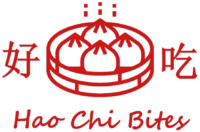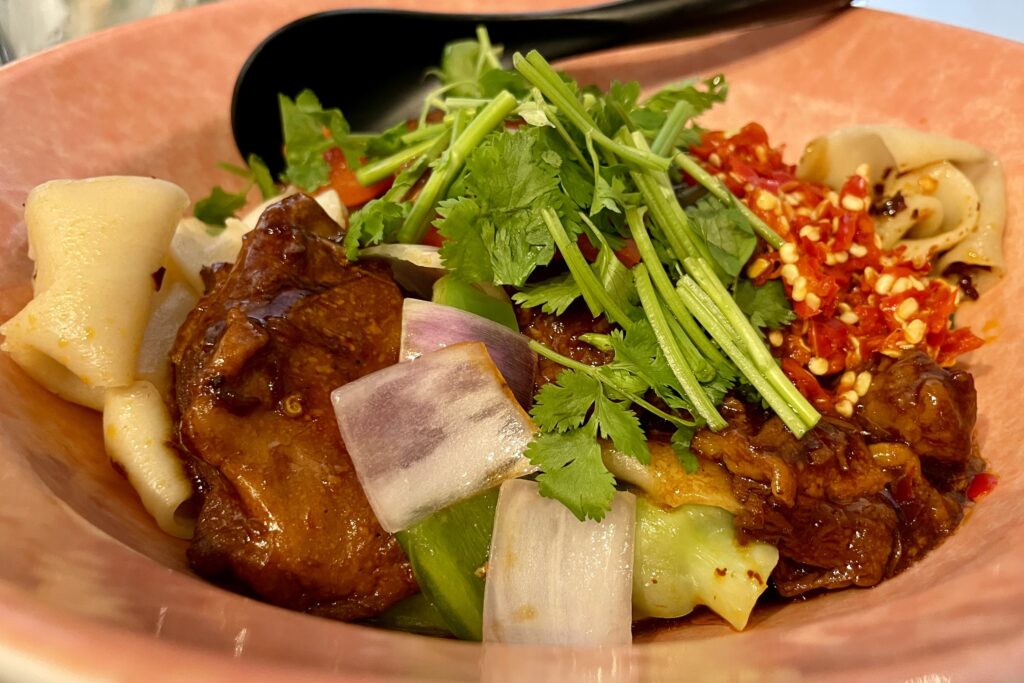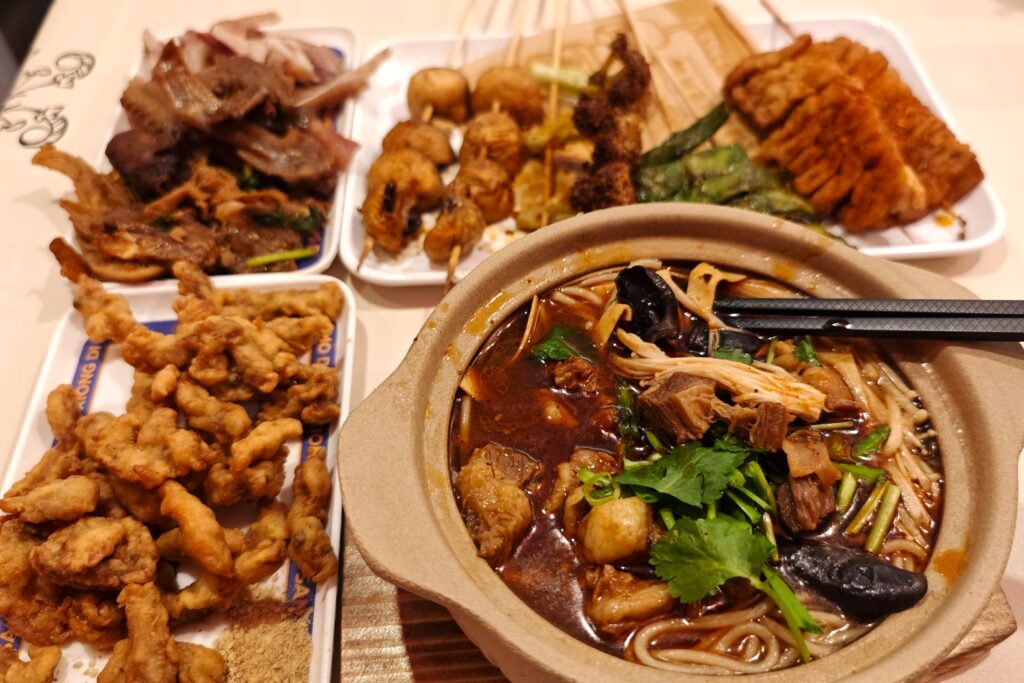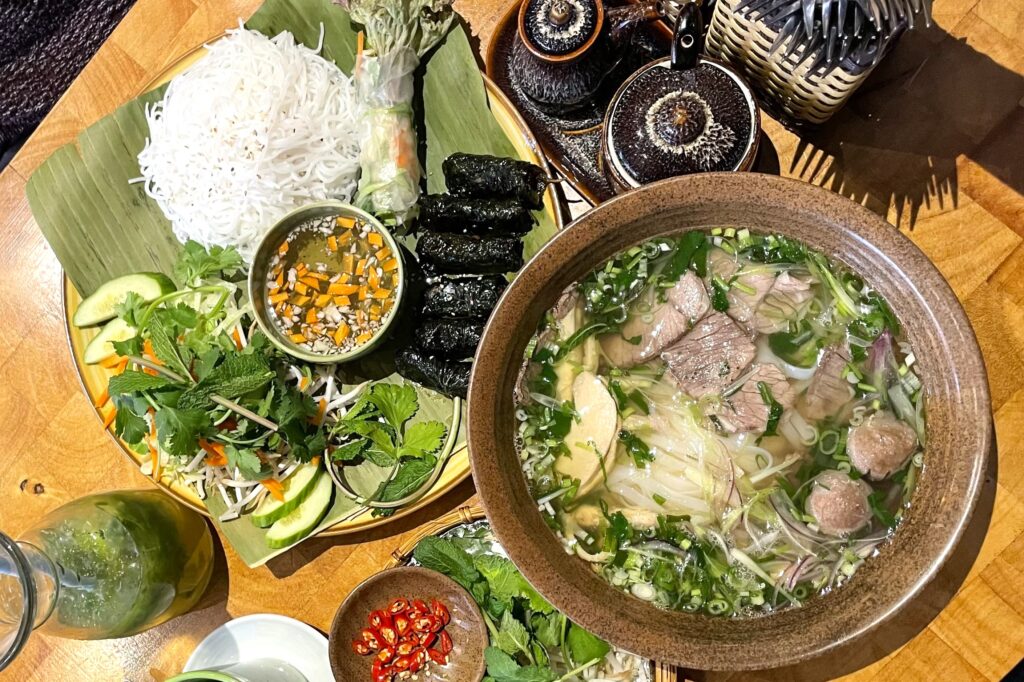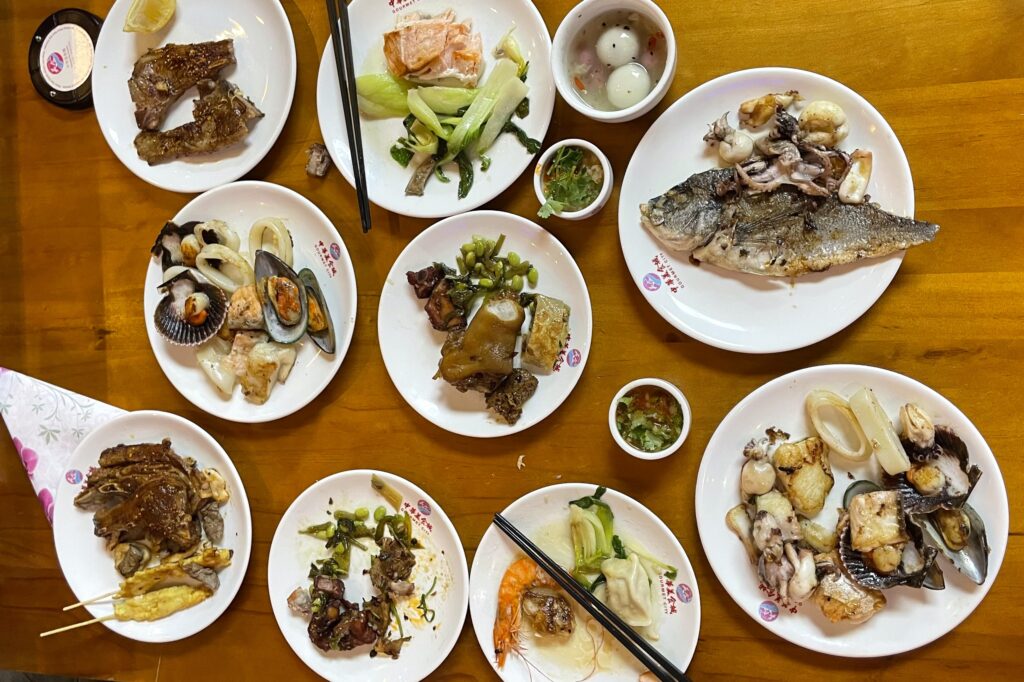Ready for a culinary adventure at one of Munich’s hottest restaurants? At Mamma Bao, you can indulge in authentic Chinese cuisine, from delicious Biang Biang Noodles to the restaurant’s signature Bao, after which the restaurant is named, and many other culinary highlights right here in Munich!
Curious about Biang Biang Noodles and Bao? Don’t worry, I’ll get to that in a minute. But first, let me give you a little background on this vibrant restaurant.
Mamma Bao takes classic Chinese dishes and adds a modern twist, celebrating bold flavors and unique presentations. Thanks to its growing popularity, there are now two locations in downtown Munich, with a new branch recently opened at Adalbertstrasse 8. Reservations are not accepted, so be prepared to wait, especially during peak times. While you wait, feel free to browse our blog for more inspiration and tips 😉
Restaurant Profile
- Name of the Restaurant: Mamma Bao (see Menu)
- Adress: Augustenstraße 31, 80333 München
- Style: Chinese Food
- Price: around 15 – 30 EUR per Person (incl. Drinks and Tips)
On our visit, we opted for a delicious combination of two types of bao and two portions of biang biang noodles. As always, we shared everything so that we could both enjoy a little bit of each dish.
Let’s dive into the world of baos, which are based on mantou (馒头), traditional steamed buns. These buns are a staple of Chinese cuisine, especially in northern China, where wheat is as common as rice. Made from a simple yeast dough and steamed to perfection, baos are delightfully fluffy and light. Their versatility shines through as they pair beautifully with main dishes, soaking up sauces, or can be enjoyed on their own, perhaps with a cup of warm soy milk for breakfast or as a snack, sometimes with a savory or sweet filling.
Mantou holds a special place in my heart. Its mild, slightly sweet flavor, airy texture, and comforting warmth, especially after a spicy Chinese meal, bring back fond memories. It’s almost like a sponge, soaking up excess oils and fats and soothing the stomach.
At Mamma Bao, you’ll find stuffed mantou, also known as bao (包) or buns. These creations are similar to burgers, so you might think of them as “Chinese burgers“. The term “包” (Bāo) means “package” or “wrapped” and refers to a variety of stuffed buns and dumplings. These include steamed dumplings and baozi, which we’ve discussed in previous posts – one of my all-time favorite Chinese dishes – as well as mantou.

Let’s not keep you in suspense any longer. We tried a Mr. Pork Bao (Hóngshāo Ròu Guābāo – 红烧肉刮包) and a Mushroom Bao (Xiānggū Guābāo – 香菇刮包) and they were as delicious as they sound.
Mr. Pork Bao features a rich filling of braised pork belly, red onion, cilantro, and crushed peanuts. The pork belly is slowly braised in a fragrant mixture of soy sauce, sugar, Shaoxing wine, ginger, garlic, and an array of spices. This process results in exceptionally tender meat with a glossy, caramelized surface. The flavor profile is a perfect balance of sweet and salty notes, while the red onions add a mild, slightly sweet crunch. Fresh cilantro lends a citrusy brightness to the robust, spicy sauce, and the crushed peanuts contribute a delightful crunch and nutty flavor, creating a harmonious blend of textures and tastes.

Mushroom Bao (香菇刮包, xiānggū Guābāo) features oyster and shiitake mushrooms (香菇 stands for shiitake mushrooms) in a thick, glossy soy sauce. This bao offers a delightful fusion of flavors and textures. The savory, slightly sweet soy sauce blends with the rich, earthy flavor of the mushrooms and the soft, mild mantou bun. The mushrooms are tender and juicy, the soy sauce is thick and flavorful, and the bao is light and fluffy. It’s a wonderful combination!

After admiring and perhaps tasting the filling, gently fold the mantou together-taking care not to break the delicate bun. Pick it up and take a bite; it’s just like a Chinese-style burger! Chopsticks or a knife and fork may come in handy if the bun falls apart or you have difficulty eating. The delightful contrast between the soft, subtly sweet mantou and the savory sauces, meats, and vegetables makes for a truly delicious experience!
Let’s dive into Biang Biang noodles, a famous specialty from China’s Shaanxi province and a hallmark of Xi’an, the ancient capital.
I vividly remember my visit years ago to Xi’an, the city famous for the Emperor’s Tombs and the legendary Terracotta Army. It was during this trip that I discovered my passion for Biang Biang noodles – an irresistible and remarkably affordable local delicacy.
These hand-pulled noodles are known for their remarkable width and thickness, which can reach up to 3-4 cm. The dough is skillfully pulled and stretched by hand several times until it reaches the desired consistency. The name “Biang Biang” is inspired by the onomatopoeic sound of the noodles being pulled and folded.

Fun fact: The noodles even have their own unique Chinese character. “Biang” is one of the most complicated characters in the Chinese language and cannot be easily typed on a standard keyboard. As a result, phonetic spellings such as 棒棒麵 (Bàngbàng Miàn) or 梆梆麵 (Bāngbāng Miàn) are often used to represent it.
At Mamma Bao, the Biang Biang noodles come in a generous bowl, seasoned with soy sauce and, depending on your spice preference, a house-made chili sauce. You can choose from mild (Non-Spicy), medium (Standard-Spicy), or the truly authentic level of heat (Asian-Spicy). Of course, we chose the authentic version.
We ordered both the classic Biang Biang noodles (油泼面) and the Biang Biang beef noodles (西红柿牛肉三合一面).
Simply Biang Biang Noodles (Yóu Pō Miàn – 油泼面) is a delicious vegetarian dish featuring a vibrant mix of cabbage, garlic, chives and a signature house sauce.

The essence of this dish lies in the sauce, which is made from pickled chili peppers that add a subtle heat and light tang. The Biang Biang noodles themselves have a chewy yet tender texture. Their wide, thick strands are perfect for soaking up the rich, spicy sauce and provide a satisfying mouthfeel. Generous sprinkles of aromatic garlic add a distinctive flavor that truly elevates the dish.
The slightly sweet herbs and chives offer a crisp, refreshing contrast to the bold, spicy and oily garlic sauce, creating a harmonious balance of flavors and textures.
The Simply Biang Biang Noodles are known for their bold spices and robust flavor, but also for their rather simple and minimalist preparation. In contrast, the Biang Biang Beef Noodles (西红柿牛肉三合一面 – Xīhóngshì Niúròu Sān Hé Yī Miàn, which translates to “Tomato Beef Noodles Three-in-One“) are incredibly rich and creamy. The term “three-in-one” emphasizes the harmonious blend of three key ingredients in a single dish.

The noodles are accompanied by a rich, savory sauce made with tender, slow-cooked beef, tomatoes, eggs and cilantro. The beef is juicy and flavorful thanks to its long, slow cooking. The tomatoes contribute a fruity, slightly sweet and tangy note that brightens the dish and balances the hearty meat. The egg adds a creamy texture and mild flavor, further enhancing the dish and adding extra protein. Finally, crisp bok choy and fresh cilantro add a burst of freshness and a hint of citrus to complete the flavor profile.
Quick Note: As with many Chinese noodle dishes, it is important to stir thoroughly before eating. This will ensure that all the ingredients blend together perfectly, allowing the complex flavors to fully develop. If the sauce separates over time, a quick stir will restore the ideal consistency.
